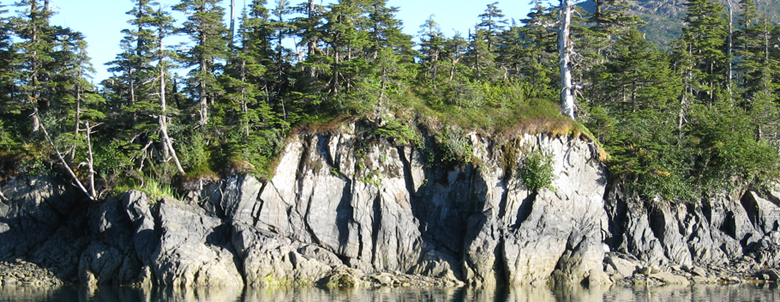PHOTOHUNT – “PROTECT(ION)


The theme for this week’s PhotoHunt is “protect(ion). I had a very hard time finding some photos that would fit this theme. Then I came across some photos that I took in Siena in 2006. We were very lucky to be in Siena during the month of September, because the beautiful mosiac floors in the Duomo di Siena are uncovered during that time . They were absolutely breathtaking, and most were in such perfect condition. That is because of the PROTECTION that they receive during most of the year.
Here is what Wikipedia has to say about the mosaic floors:
The inlaid marble mosaic floor is one of the most ornate of its kind in Italy, covering the whole floor of the cathedral. This undertaking went on from the fourteenth to the sixteenth centuries, and about forty artists made their contribution. The floor consists of 56 panels in different sizes. Most have a rectangular shape, but the later ones in the transept are hexagons or rhombuses. They represent the sibyls, scenes from the Old Testament, allegories and virtues. Most are still in their original state. The earliest scenes were made by a graffito technique: drilling tiny holes and scratching lines in the marble and filling these with bitumen or mineral pitch. In a later stage black, white, green, red and blue marble intarsia were used. This technique of marble inlay also evolved during the years, finally resulting in a vigorous contrast of light and dark, giving it an almost modern, impressionistic composition.
The uncovered floor can only be seen for a period of six to ten weeks each year, generally including the month of September.[1] The rest of the year, they are covered and only a few are on display.
The earliest panel was probably the Wheel of Fortune (Ruota della Fortuna), laid in 1372 (restored in 1864). The She-Wolf of Siena with the emblems of the confederate cities (Lupa senese e simboli delle città alleate) probably dates from 1373 (also restored in 1864). The Four Virtues (Temperanza, Prudenza, Giustizia and Fortezza) and Mercy (Misericordia) date from 1406, as established by a payment made to Marchese d’Adamo and his fellow workers. They were the craftsmen who executed the cartoons of Sienese painters.
The first known artist working on the panels, was Domenico di Niccolò dei Cori, who was in charge of the cathedral between 1413 and 1423. We can ascribe to him several panels such as the Story of King David, David the Psalmist and David and Goliath. His successor as superintendent, Paolo di Martino, completed between 1424 and 1426 the Victory of Joshua and Victory of Samson over the Philistines.
In 1434 the renowned painter Domenico di Bartolo continued with a new panel Emperor Sigismund Enthroned (Imperatore Sigismundo in trono). The Holy Roman Emperor Sigismund was popular in Siena, because he resided there for ten months on his way to Rome for his coronation. Next to this panel, is the composition in 1447 (probably) by Pietro di Tommaso del Minella of the Death of Absolom (Morte di Assalonne).
The next panel dates from 1473: Stories from the Life of Judith and the Liberation of Bethulia (Liberazione di Betulia) (probably) by Urbano da Cortona.
In 1480 Alberto Aringhieri was appointed superintendent of the works. From then on, the mosaic floor scheme began to make serious progress. Between 1481 and 1483 the ten panels of the Sibyls were worked out. A few are ascribed to eminent artists, such as Matteo di Giovanni (The Samian Sibyl), Neroccio di Bartolomeo de’ Landi (Hellespontine Sibyl) and Benvenuto di Giovanni (Albunenan Sibyl). The Cumaean, Delphic, Persian and Phrygian Sibyls are from the hand of the obscure German artist Vito di Marco. The Erythraean Sibyl was originally by Antonio Federighi, the Libyan Sibyl by the painter Guidoccio Cozzarelli, but both have been extensively renovated. The large panel in the transept The Slaughter of the Innocents (Strage degli Innocenti) is probably the work of Matteo di Giovanni in 1481. The large panel below, the Expulsion of Herod (Cacciata di Erode), was designed by Benvenuto di Giovanni in 1484-1485. The Story of Fortuna, or Hill of Virtue (Allegoria della Fortuna), by Pinturicchio in 1504, was the last one commissioned by Aringhieri. This panel also gives a depiction of Socrates.
Domenico Beccafumi, the most renowned Sienese artist of his time, worked on cartoons for the floor during thirty years (1518-1547). Half of the thirteen Scenes from the Life of Elijah, in the transept of the cathedral, were designed by him (two hexagons and two rhombuses). The eight meter long frieze Moses Striking water from the Rock was executed by him in 1525. The bordering panel, Moses on Mount Sinai was laid in 1531. His final contribution was the panel in front of the main altar: the Sacrifice of Isaac (1547).

Wow, Cindy. These are beautiful mosaic floors. Lucky you got to see them.
Gorgeous floors!
We lucked out when we were first in Siena – for some reason the floors were uncovered later than normal (I think that it was because some restoration work was underway) – we were stunned by the detailed and intricate work! Great choice for this week’s theme.
I am very late catching up but still wanted to comment. How lucky you are to have been able to see these amazing mosaic floors! I have spent 5 weeks in Siena but it was during periods when the floor was covered. I love these photos!
girasoli-I do feel very lucky to have seen these floors. I really didn’t even know what I would be seeing when we visited. They were absolutely amazing, so I hope you get to see them one day.